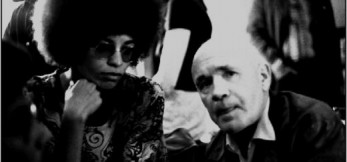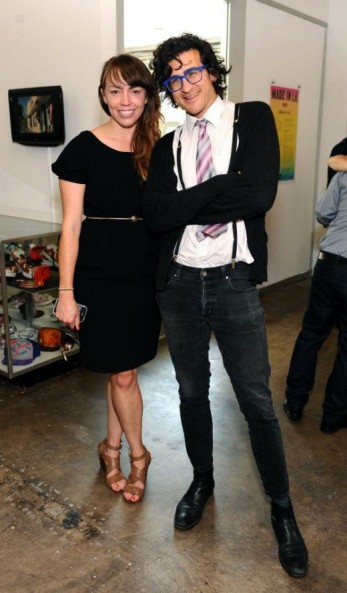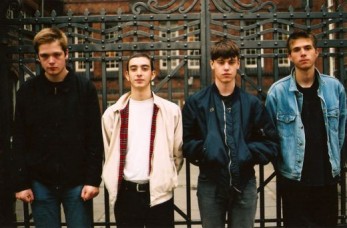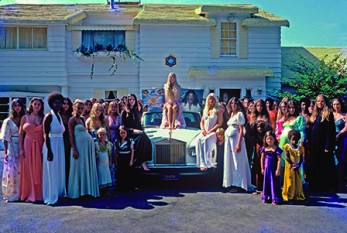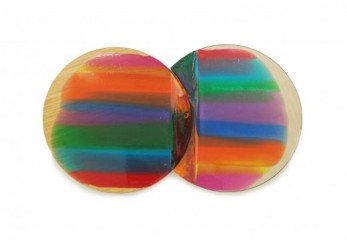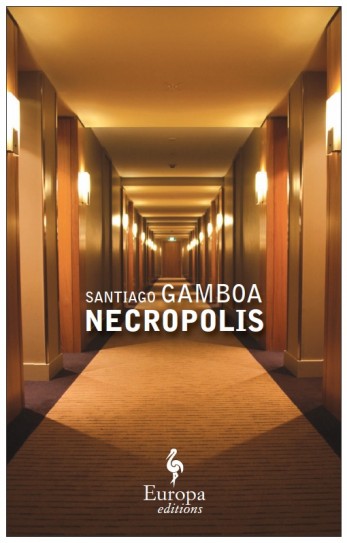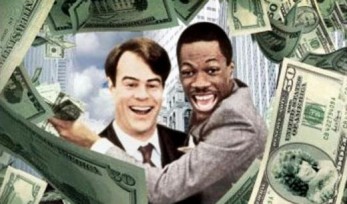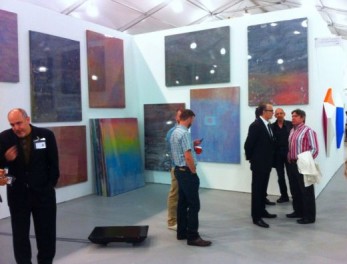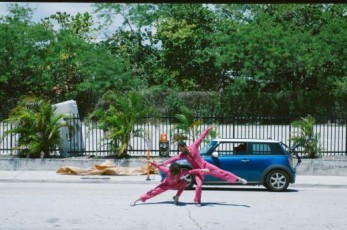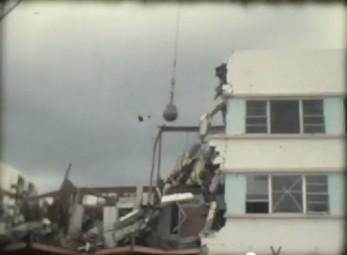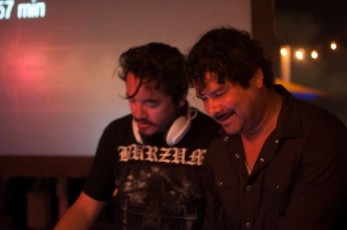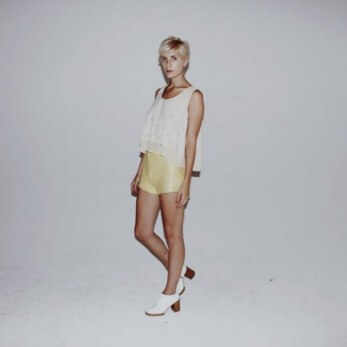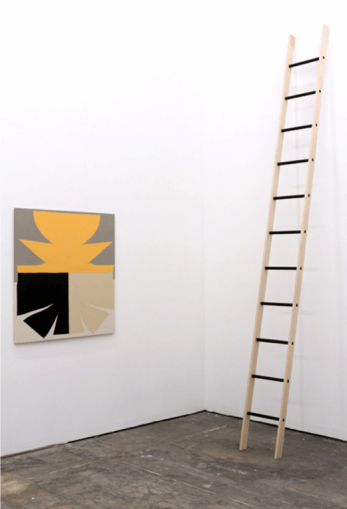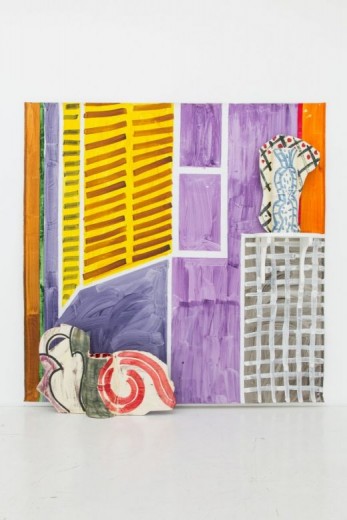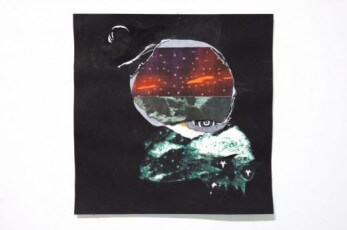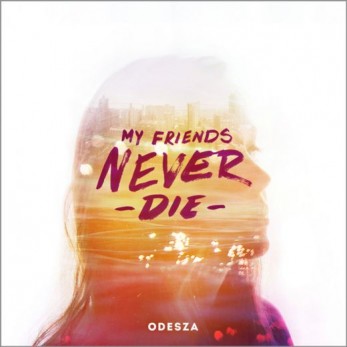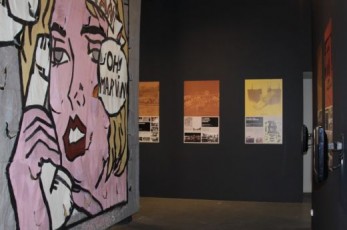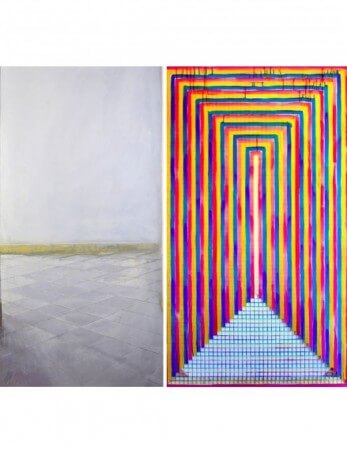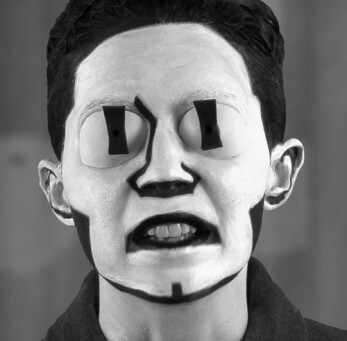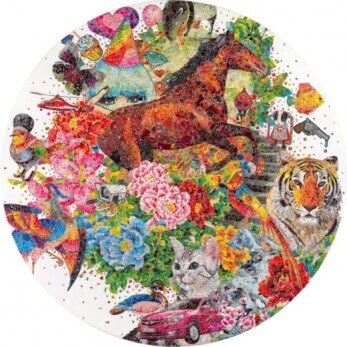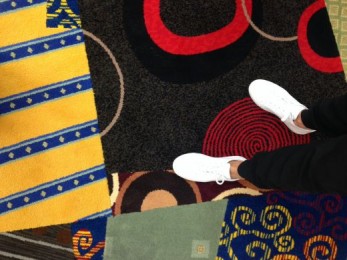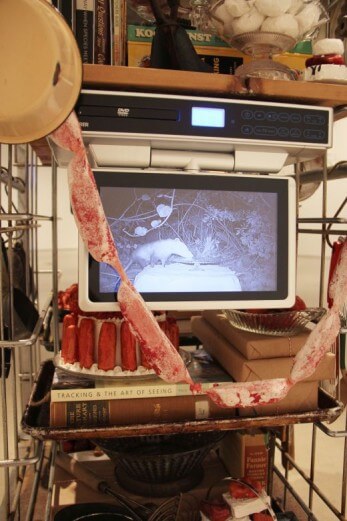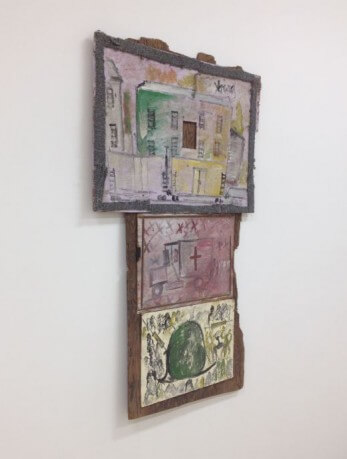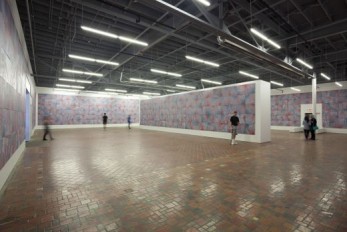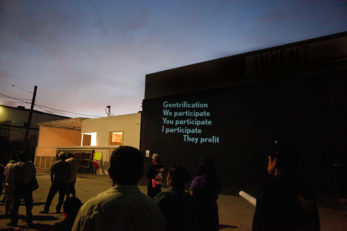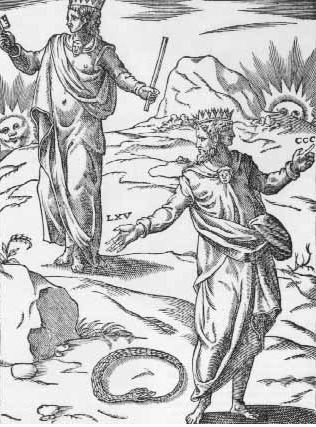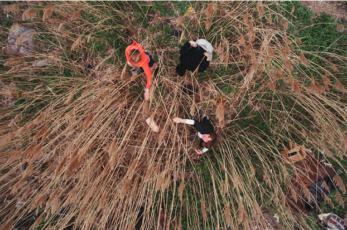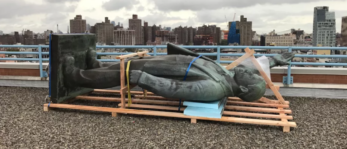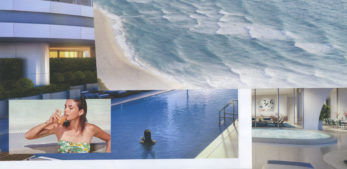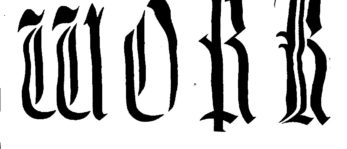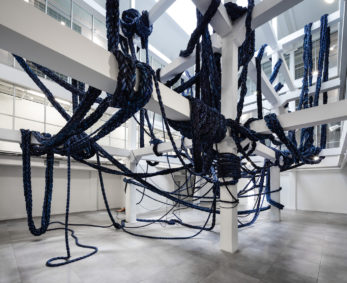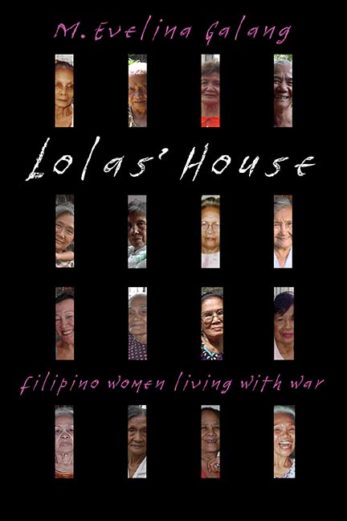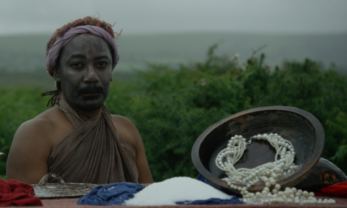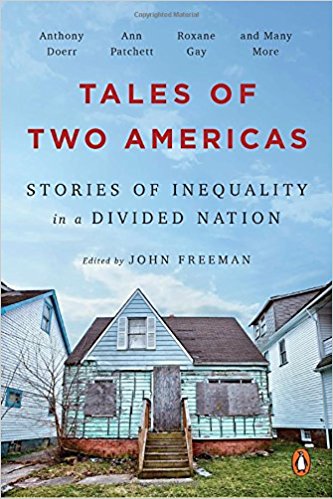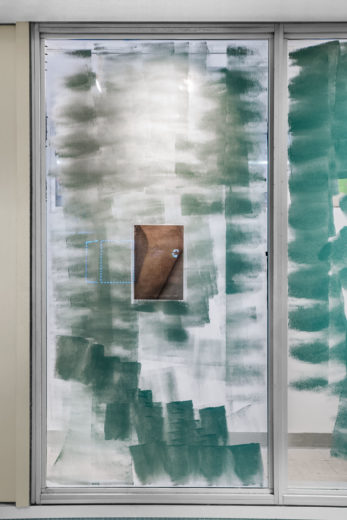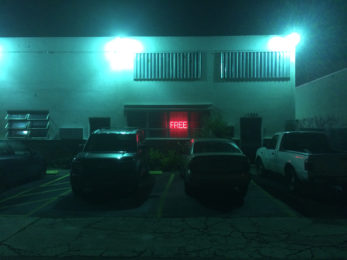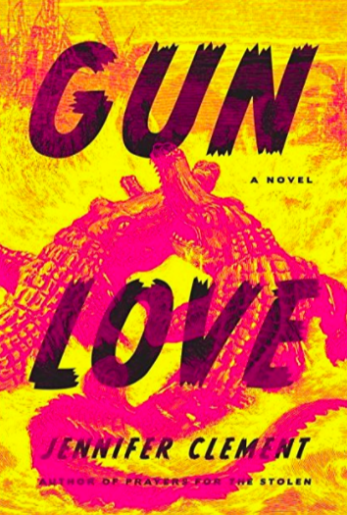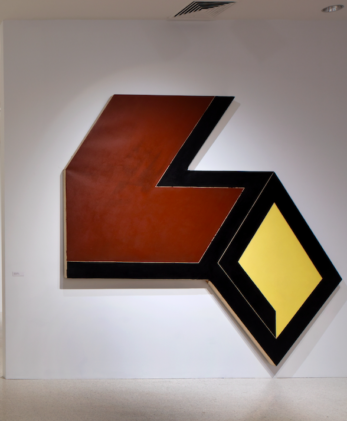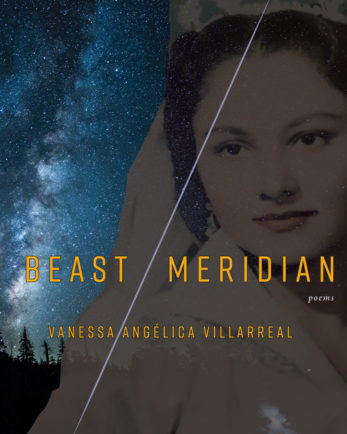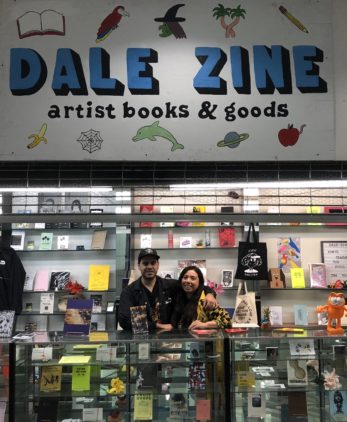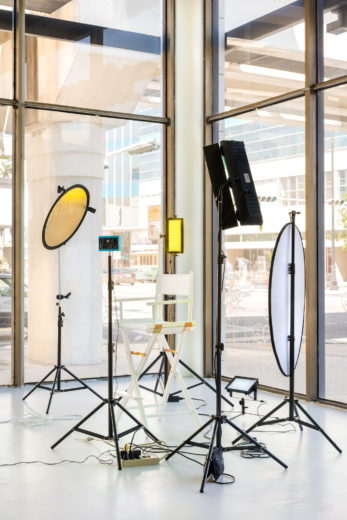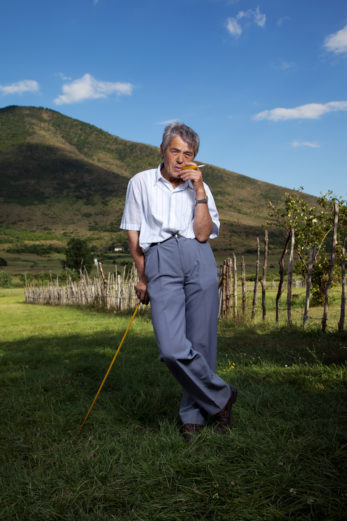Yesterday, Museum of Contemporary Art, North Miami Director and Chief Curator Bonnie Clearwater announced that she was leaving the museum to lead Nova Southeastern University’s Museum of Art | Fort Lauderdale. She spoke to Miami Rail Editor Hunter Braithwaite this afternoon.
On July 10th, poet and Miami Rail contributor P. Scott Cunningham will give a marathon reading of Jean Genet’s What Remains of a Rembrandt Torn into Little Squares All the Same Size and Shot Down the Toilet. Artist Nathlie Provosty will introduce the work. The reading begins at 7pm at Gallery Diet.
Sarah Williams runs The Art Book Review alongside Andrew Berardini. On Friday, they will team up with Bookleggers to offer free art books to those willing to review them. The event starts at 7pm at Locust Projects.
Iceage made landfall in the States as a veritable blitzkrieg—whirling guitars and angst and proto-punk vocals, all wrapped up in an aural haze that was equal parts romantic and gritty. With their first album, New Brigade (2011) composed almost entirely of two-minute songs, the Danish foursome were young, unassuming, and lethal. The blogosphere and fans asserted once again that punk wasn’t dead. It had just been temporarily comatose, only to be revived by four pouty teenagers from Copenhagen.
There is only one thing that was off limits in presenting the family’s story, which we agreed to: the family did not want the specifics of their foundational sex magic ritual they practiced to be detailed in the film. We agreed to this, as it’s a pretty wild ritual, and we wanted the audience not to be distracted by sacred rituals that could be easily misinterpreted.
Upstairs the mood changes significantly with a new take at critiquing minimalism. A wall-mounted color field diptych, mirroring its colors at the intersection of a shape Ellsworth Kelly may have never used shadows a pour painting trapped forever in a state of process. The pour painting shares a large dimple with another duo of stretched raw canvas that remain the most minimalist yet.
The objects in the room subtly inhabit the enormous space by mimicking the confusion of hasty evacuation and abandonment: strewn business envelopes, some jaggedly ripped open, have unceremoniously fallen to the floor lie in listless mounds and form gentle sweeping piles, the edges of the multiple envelopes ruffling out like the folds of an Elizabethan collar.
Lured by both the book’s title and an image of a hotel hallway, luxurious and empty, I entered the graveyard frame story of Santiago Gamboa’s newest novel, Necropolis. The Colombian author composes a polyphonic narrative from an unnamed author invited to the International Congress of Biography and Memory in Jerusalem.
If we’re to interpret Trading Spaces 2 as taste demands, that is, the sequel to the 1983 John Landis movie, it would go like this: When we last saw our friends Randolph and Mortimer Duke (played by Onajide Shabaka and Rick Ulysse), they were struggling and snuggling for warmth in Philadelphia, the city they once ruled. For the first time ever there is a seat without a Duke at the Commodities Exchange. Meanwhile, Winthorpe and Ophelia (Dona Altemus and Antonia Wright) cruised the Caribbean in their ketch, while Billy Ray (Magnus Sigurdarson) enjoyed his new wealth with a piña colada.
Traversing the rest of the booths, I couldn’t help but hear visitors questioning gallerists on how exactly this whole “curated fair” works. It seemed to be a common topic of conversation. I was walking around with artist Brookhart Jonquil, who said that having a lead curator “shifts the priority towards showing and the viewing experience, rather than just marketability.”
There is a particular guttural feeling that develops when you recognize the importance of one thing against another—a silver moon against a starless sky, its brightness recognizable only by the surrounding darkness. It’s the feeling you have when one arbitrary color suddenly renders another arbitrary color magnificent; an acidic, engineered pink against a lush tropical green. TASTE is born out of these dichotomies. The bare skin of a dancer’s foot meets the gray, dusty concrete of a warehouse, traces of darkness are left on the pressure points: the pads, the large toe, the heel—each highlighted in a multitude of colors.
Gianni Versace, the lauded Italian fashion designer, was shot and killed outside of his home by Andrew Cunanan for no apparent reason. Eight days later, Cunanan committed suicide on a boat. Harry Pussy was a band that broke many rules of decorum, primarily those regarding music. They’ve been hailed as the most abrasive band America’s ever known.
The performance-artist duo’s work is well outside the typical realm of the safe and sensible, crossbreeding pirated Mexico City cumbia and Argentine disco with obscure musings of Pérez Prado and Miami Booty Bass. Eamon spun the soundtrack as DJ Lengua, while Julio ran the visuals: strange, often violent video trips projected onto a white screen and distorted with a Kaos Pad.
We’re working on new music, but it hasn’t formed into a cohesive album yet. To be honest, as self-navigating, digital-breathing weirdos who like to release work into the aether as soon as it’s finished, to be viewed, shared, and remixed by the greater public, we’re a little bit disillusioned with the “album” as a form—namely the ponderous pace of its production.
Math Bass’s work mostly occurs as one-night-only theatrical performances populated by elements like dogs, fog, cement pants, ladders, blankets, and plants. Long after the actors have exited the stage, latent sculptural objects lie about in repose, still charged with the energy of performance. Michael Jon Gallery offers us a lean and quiet grouping of Bass’s sculptural idioms: a powder-coated fence and a ladder, concrete legs cast in now-absent denim, and an abstract painting.
Betty Woodman—CONTRO VERSIES CONTRO VERSIA: An inaccurate history of painting and ceramics
Hunter Braithwaite
Flat or round, round or flat? At times, Betty Woodman seems like Magellan, sailing toward the edge, but sure that a curve will appear soon. For over half a century, the artist has explored ceramics’ boundaries and borders, not just the formal ones—as in how could this also be a painting?, but how the vessel reappears around the globe, from Italy to the Yucatan to Japan. The vase is the starting point, the destinations far flung.
Beatriz Monteavaro is a visual artist and plays drum in the local drone metal band Holly Hunt, and as much as it is possible, her art looks like her music sounds. Those are the two ends of that hungry snake, and this, her first Miami exhibition in five years, is their salivating fusion.
ODESZA is Harrison Mills and Clayton Knight, an experimental electronic duo from Seattle, the kind that doesn’t consider itself an EDM act. Maybe that’s fair: the acronym (Electronic Dance Music) has been stigmatized by artless knuckle-draggers only interested in their next hasty bass drop. A more nuanced, creatively ambitious act like ODESZA does not deserve this company: their music flickers and lurches in unexpected ways, the voices they coat across their fields of pecking noises sound protohuman as they howl in the throes of a kind of pre-speech, words chopped into loops of a single, manic concern that evades the comfort of language.
It’s been twelve long years since James Spader bent Maggie Gyllenhaal over a desk in Secretary, but bureaucracy still has the power to titillate. Artists are out, curators and registrars in. Last October was that sexy panel at the Bass Museum accompanied by Cultured Magazine’s photospread “Curator Culture.” Before that, both Documenta and Venice ran sleek white-gloved fingers through the archive’s dust, as did CIFO’s recent Deferred Archive. Now there is this traveling exhibition, which presents an enthralling assortment of strategies for nomadic, extra-institutional art- and exhibition-making. Man, look at those hyphens.
Organized by Rafael Domenech, Havana-born artist and curator, Binary // Binario features two young artists from Domenech’s alma mater, Havana’s Academia Nacional de Bellas Artes San Alejandro. Ernesto García Sánchez and José Manuel Mesías—both painters—approach their medium in divergent ways: Mesías draws largely on the unique visual quality of an aesthetic rooted in Cuba’s history and its cultural evolution, while Sánchez’s works fall in line with a long tradition of paintings that emphasize the medium itself, revealing the inner workings of the support via delicate cutaways in the canvas.
In connection with its current exhibition Myth and Machine: The First World War in Visual Culture, the Wolfsonian–Florida International University hosted artist Mary Reid Kelley for a screening of two of her WWI-inspired videos: Sadie, the Saddest Sadist (2009) and You Make Me Iliad (2010). Reid Kelley is well known for her forceful intellect, expressed in her extremely clever verse-making, biting and playful wordplay, ethereal screen presence, and her filmmaking itself, which entails meticulously researched production details such as drawn imagery, painstaking stop-motion lettering, and costume and set design digitally enhanced by her collaborator and husband Patrick Kelley.
Art Lexïng debuted its new gallery space in Miami Ironside with a solo exhibition by Beijing-based artist Ye Hongxing. Selected in 2004 by the Asian Art Museum of California and Art Cologne as one of China’s twenty top rising artists, her work has been shown at the China Art Museum, Shanghai Museum of Contemporary Art, and Art Cologne, among others.
At the opening of Michael Jon Gallery’s group show, someone kept turning off the lights. My wife thought this meant we should leave—but no, dimming the lights only makes for better viewing of Laddie John Dill’s celebrated untitled light work, which he first created in 1971 and has since been (laboriously) installed at the Venice Biennale, among other places. Showcased at the center of the gallery, mounds of sand and sediment house angular arrangements of glass panes that—when someone hits the lights—are softly illuminated from within by argon lighting just beneath the surface.
In the Blueshift Project’s brochure for Made in New York, a group show featuring eight New York artists and curated by Robert Dimin, an effort is made to express that the works on view are separate from the “noise” that results from the contemporary art fairs that swarm Miami each December. I visited the gallery on a quiet day soon after the show’s opening and was led through it by co-director Sofia Bastidas and manager Ana Clara Silva. Each had interesting insights to share about the overall concept of the grouping, which brings together many works that address the human and animal body and–—although made in New York—issues close to home in Miami.
Paintings by the artist Purvis Young depict swirled worlds of burning cities, tanks rolling to war, man-sized roaches attacking man-sized men. They’re not on clean canvases — they’re on the warped, chipped, and beautifully assembled wooden flotsam found on the streets of Miami.
Justine Ludwig and I spent a lot of time together during this year’s Dallas Arts Week. Previews, openings, after-parties; galas, auctions, dinners. But we never really had a chance to talk. So on Sunday, April 12, I guilted her into picking me up from my hotel at 1530 Main Street, and driving me to her place of work, Dallas Contemporary, located at 161 Glass Street. Not unlike the movie Speed, the following conversation only took place while we were in motion.
As we enter the twilight of Barack Obama’s presidency, the star of his icon is only beginning to rise. In office during the ascent of social media and the greatest explosion of images in history, Obama’s image, digitally encoded, will likely morph and proliferate over the coming years, before taking on the relatively stable orbit of history. Perhaps sensing this, the artist Rob Pruitt painted a portrait of Obama once a day, every day, since his inauguration.
1. Rhett Herman, “How fast is the Earth moving?” Scientific American. 2. Karen Barad, “Nature’s Queer Performativity,” KVINDER, KØN & FORSKNING NR. 1-2, 2012. 3. For a competent mythography of Castillo, see Goyanes’ “SONGS FEEL LIKE MUSCLE MEMORY, OR, I’M OFF SOCIAL MEDIA, HMU ON YOUTUBE: A Mythography of Domingo Castillo,” The Miami Rail, 2015. Continue Reading »
______________________________ 1. Rebecca Solnit and Susan Schwartzenberg, Hollow City: The Siege of San Francisco and the Crisis of American Urbanism (London: Verso Press, 2000), p. 138. 2. Madeleine Schwartz, “The Art of Gentrification,” Dissent (Winter 2014). https://www.dissentmagazine.org/article/the-art-of-gentrification 3. Sharon Zukin, Naked City: The Death and Life of Authentic Urban Places (Oxford: Oxford University Press, 2010), Continue Reading »
______________________ This essay was commissioned by the Miami Rail as part of Field Perspectives-a co-publishing initiative with Miami Rail, Temporary Art Review and Common Field for the 2016 Common Field Convening.
_____________________________________ 1. Marginal Ecologies: accidental habitat; The unintended product of human activity and nature’s unflagging opportunism; a weedy cosmopolitan community in the wastelands and margins of the urban landscape from a central business district to the suburban/rural fringe. (From Kevin Michael Anderson, Marginal Nature: Urban Wastelands and the Geography of Nature, 2009) 2. Tsing, A. Continue Reading »
________________________________ 1. See for example the story of “BHAAAD – Boyle Heights Alliance Against Artwashing and Displacement,” in Los Angeles: http://observer.com/2016/07/one-la-hood-is-violently-fighting-gentrification-demanding-art-galleries-leave/ 2. Frederic Jameson, “The Aesthetics of Singularity,” in: New Left Review 92, March-April 2015, pp. 130-131 3. See: Max Kozloff, “American Painting During The Cold War,” Artforum Vol. 11, No. 9, May 1973 and: Continue Reading »
Part A. The Set Up, A Pitch. The 2008 crash forced Contemporary Art (CA) institutions to restructure their financial dependencies and sources; a process that only exaggerated what had started after economic shifts in the 1970’s dried up public funding for the arts and recalibrated those models toward a dependency on corporate sponsorships. In some Continue Reading »
___________________________ 1. Peter Murray in Beatriz Colomina and Craig Buckley, Clip/Stamp/Fold: The Radical Architecture of Little Magazines (New York: Actar, 2011), 30. 2. Stefano Boeri in Colomina and Buckley, 49. 3. Gwen Allen, Artists’ Magazines: An Alternative Space for Art (Cambridge: MIT Press, 2011), 3. 4. Stephen Perkins, “Alternative Art Publishing: Artists’ Magazines (1960-1980),” Approaching Continue Reading »


